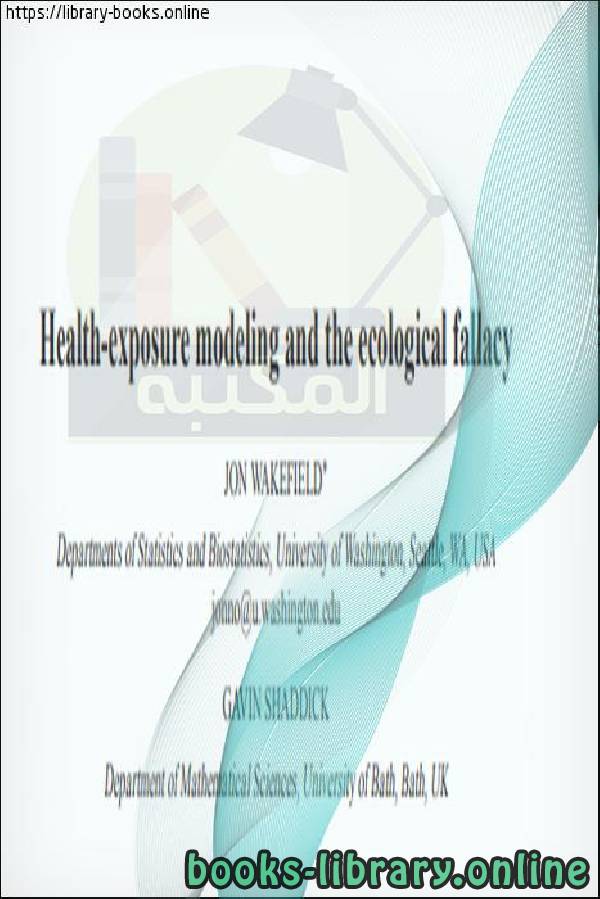❞Wakefield J., Shaddick G❝ المؤلِّف - المكتبة
- ❞Wakefield J., Shaddick G❝ المؤلِّف - المكتبة
█ حصرياً جميع الاقتباسات من أعمال المؤلِّف ❞ Wakefield J , Shaddick G ❝ أقوال فقرات هامة مراجعات 2025 ❰ له مجموعة الإنجازات والمؤلفات أبرزها exposure modeling and the ecological fallacy ❱
إنضم الآن وتصفح بدون إعلانات
له مجموعة من الإنجازات والمؤلفات أبرزها ❞ exposure modeling and the ecological fallacy ❝
#32K
3 مشاهدة هذا اليوم#29K
2 مشاهدة هذا الشهر#25K
2K إجمالي المشاهدات نبذه عن الكتاب: practice since regression estimates can be sensitive to the particular spatial model used. The model may provide more appropriate standard errors than under an assumption of independent outcomes, however. If there is evidence of residual spatial dependence, then we would recommend carrying out sensitivity analyses under a range of scenarios, including models that do and do not acknowledge spatial dependence. Model (3.2), with some modification, also allows computation for the disease-mapping model of Kelsall and Wakefield (2002) to be carried out without recourse to approximation. For a related approach, see Follestad and Rue (2003). A difficult yet crucial issue in any analysis that uses spatially referenced exposure data is whether to model the exposure surface. As an aid to making this decision, we would recommend following the procedure described in Section 4. Specifically, one may fit a model to the monitor exposure data, and simulate new monitor and population location exposure data using the fitted model; the differences between known and estimated values can then be examined, to gain insight into whether an exposure modeling strategy is likely to be successful. The study design will often inform the need to model the exposure surface. An interesting design question is the determination of which populations to study in relation to the location of the pollution monitors. This choice represents the classic mean–variance trade-off; populations close to a monitor have accurate exposure assessment but are small in size, while examining larger populations gives an increase in power but results in less accurate exposure estimates. One way of increasing power is to have a dense monitoring network, where dense is relative to both the spatial variability in exposure and the population distribution. If the exposure surface is relatively flat, only a sparse network is required, but in this case a spatial study will have low power due to narrow exposure contrasts. In studies of the acute effects of air pollution, temporal contrasts provide the greatest exposure information, which suggests that in such a study, modeling spatial variability in exposure will not be worthwhile.
عدد المشاهدات
3472
عدد الصفحات
18
نماذج من أعمال Wakefield J., Shaddick G:


